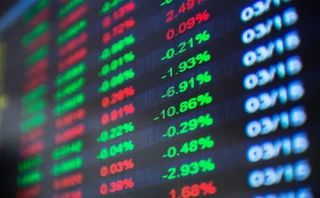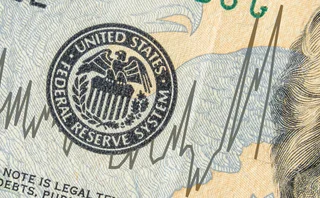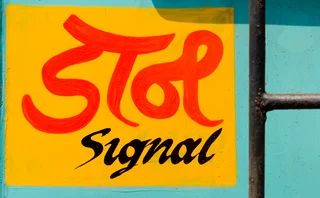
Madoff fraud puts focus on due diligence
As a swathe of investors reported sizable exposures to New York-based broker and hedge fund manager Bernard Madoff, several market players that had conducted due diligence on his firm told Risk that it had raised danger signals as far back as the late 1990s.
As of January 2008, the firm had $17.1 billion in assets under management and served 11-25 clients, SEC filings show. "All I can say is this is a real tragedy and we are doing everything we can to minimise the losses," says Madoff attorney Ira Sorkin, of New York-based law firm Dickstein Shapiro.
On December 16, SEC chairman Christopher Cox said the supervisor would conduct a review of its reaction to "credible and specific allegations" concerning Madoff, which dated back to at least 1999.
Many large and otherwise sophisticated dealers and funds of funds have been hit by the alleged fraud. Among them, BNP Paribas reported an exposure of €350 million ($492 million) to the fund stemming from its trading business and collateralised lending to fund of funds, while HSBC admitted it may have lost approximately $1 billion from providing financing to institutional clients that invested in Madoff. Man Group similarly reported a $360 million exposure to funds advised or sub-advised by BMIS, via its Switzerland-based fund of funds. According to the SEC indictment, Madoff himself believed total losses from the scheme added up to an eye-watering $50 billion.
Although the scale of the alleged scam has shocked onlookers, some market participants are not surprised by the accusations of manager fraud. In fact, those institutions that didn't invest in the fund say there were a number of red flags that should have warded off potential clients. One was a lack of sufficient independent oversight at BMIS, which didn't have a relationship with a major auditor.
"He was doing custody, trading and administration. That was a big red flag," says one London-based fund derivatives banker at a large European dealer. According to those who had done due diligence on BMIS, the multi-billion dollar operation was audited by a firm operating on the outskirts of New York with three employees - one of whom was 78 and living in Florida.
Sources say Madoff was difficult to meet in person and often cancelled appointments due to illness. "He was very forthcoming in his excuses," recalls one US-based hedge fund manager who tried to meet with him, saying he once claimed to be undergoing root canal surgery. Madoff was also unable to answer basic questions about BMIS, such as how it was organised, what kind of clients it catered for and how much money it managed, he adds.
Hedge fund managers often charge a 2% management fee on investments and a further 20% performance fee. Fees at BMIS were far cheaper, allowing a variety of feeder funds to charge additional management fees and still capture investment - something that further provoked suspicion, according to market participants.
The popularity of BMIS meant some banks were approached on an almost monthly basis with requests for leveraged trades on the fund. Due to the highly risky nature of such trades, which require the dealer to carry underlying fund shares as a hedge, banks often insist on the use of managed account platforms. But Madoff is said to have refused approaches to set up managed accounts, even when the rejection jeopardised potential investments of as much as $1 billion.
However, the most curious aspect of BMIS was its investment performance. Madoff claimed to be conducting a split-strike conversion strategy, which is also known as collaring. It involves selling a protective put option while simultaneously buying a covered call option. Such a strategy should outperform a long stock position while capping upside and downside, analysts say. Nonetheless, market participants who analysed position reports and other information about BMIS remained mystified at how the fund earned such high and stable returns. "I tried to replicate his strategy," says the London-based fund derivatives banker. "And there's no way the strategy he was describing to me was making the money. So it was something else: a black box."
Bewilderment at Madoff's track record spawned accusations of some kind of regulatory capital arbitrage involving his firm's brokerage unit and of front-running client orders. The SEC found three violations of best-execution rules during an examination of the firm in 2005, according to an agency spokesman. Best execution rules stipulate brokers must execute orders at the most favourable available terms for their clients, taking into account speed, pricing and likelihood of execution.
With so many question marks hanging over BMIS, why did it continue to attract investment? "Most people have a list of acceptable third-party administrators, prime brokers and audit firms, and this guy would have failed on at least two of those, so people would have to effectively overrule their standard policies," says one London-based hedge fund derivatives banker at a large US dealer. Madoff's long career history may have helped, which included a spell as a member of the board of governors of the National Association of Securities Dealers and chairman of the board of directors at Nasdaq. Madoff had also served on various SEC industry panels.
Ironically, sources say the secretive nature of BMIS and Madoff's elusiveness only served to further whet appetite among some investors. Whether intentional or not, closing the fund down to new investment also had the Pavlovian effect of heightening investor interest in BMIS, market participants say. But the most alluring factor was simple, suggests the US-based hedge fund manager: "If you looked at his track record, it was one of the most phenomenal track records you could ever behold. People were intoxicated by returns."
Only users who have a paid subscription or are part of a corporate subscription are able to print or copy content.
To access these options, along with all other subscription benefits, please contact info@risk.net or view our subscription options here: http://subscriptions.risk.net/subscribe
You are currently unable to print this content. Please contact info@risk.net to find out more.
You are currently unable to copy this content. Please contact info@risk.net to find out more.
Copyright Infopro Digital Limited. All rights reserved.
As outlined in our terms and conditions, https://www.infopro-digital.com/terms-and-conditions/subscriptions/ (point 2.4), printing is limited to a single copy.
If you would like to purchase additional rights please email info@risk.net
Copyright Infopro Digital Limited. All rights reserved.
You may share this content using our article tools. As outlined in our terms and conditions, https://www.infopro-digital.com/terms-and-conditions/subscriptions/ (clause 2.4), an Authorised User may only make one copy of the materials for their own personal use. You must also comply with the restrictions in clause 2.5.
If you would like to purchase additional rights please email info@risk.net
More on Markets
BofA sets its sights on US synthetic risk transfer market
New trading initiative has already notched at least three transactions
BNPP ups efforts to weed out skew sniffers
French bank deploys skew sensitivity algo to help identify predatory behaviour
BlackRock exec pushes for FX swaps Clob
FX head Chaudhry says all-to-all venue could boost TCA, price discovery and spur algo trading
FXGO eyes platform upgrades with new fee model
Bloomberg’s brokerage charges will fund upcoming automation and TCA projects
EU bonds favoured over swaps as hedge for European debt
Hedge funds are increasingly using the bonds to hedge Bunds and OATs as swap correlations decline
Canada benchmark shaken by T+1 hedge fund influx
Shortened settlement cycle swept hedge fund trades into Corra, making the rate more volatile
Basis swaps surge amid US repo concerns
Fed funds-versus-SOFR swap volumes nearly quadruple as declining Fed reserves impact funding rates
India delays initial margin go-live date
RBI communicated putting off initial margin rules one day before planned November 8 implementation







